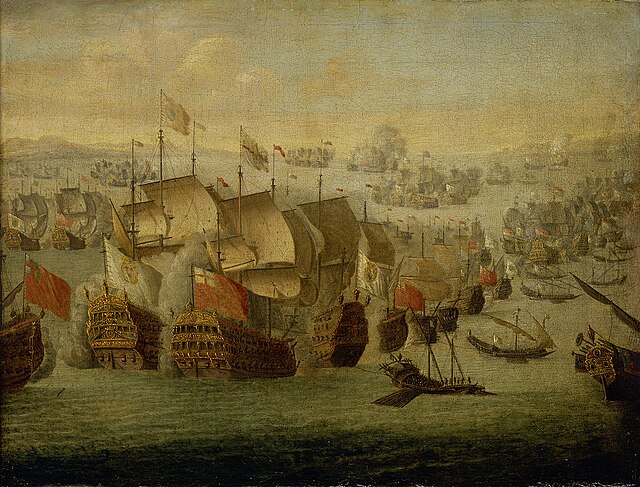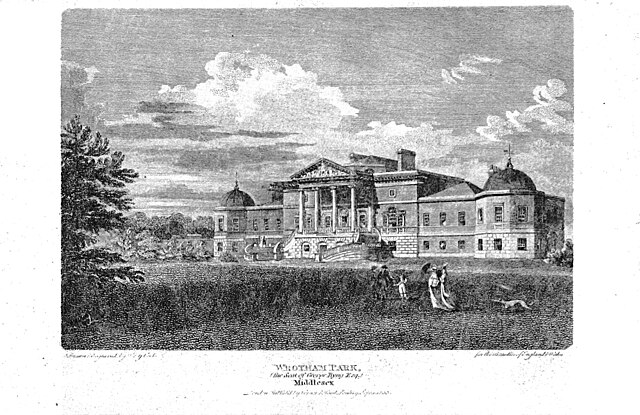HMS Royal Katherine (1664)
HMS Royal Katherine was an 84-gun full-rigged second-rate ship of the line of the Royal Navy, launched in 1664 at Woolwich Dockyard. Her launching was conducted by Charles II and attended by Samuel Pepys. Royal Katherine fought in both the Second and Third Anglo-Dutch Wars and afterwards, the War of the Grand Alliance before entering the dockyard at Portsmouth for rebuilding in 1702.
In this rebuilding, she was upgraded to carry more guns, 90 in total, and served in the War of the Spanish Succession during which she was renamed Ramillies in honour of John Churchill's victory at the Battle of Ramillies. She was rebuilt again in 1742–3 before serving as the flagship of the ill-fated Admiral John Byng in the Seven Years' War. Ramillies was wrecked at Bolt Tail near Hope Cove on 15 February 1760.
HMS Royal Katherine, illustrated from a painting in 1664.
The Battle of Malaga, 13 August 1704. Foudroyant in starboard-quarter view, is closely engaged to starboard with the Royal Katherine
Admiral John Byng was a British Royal Navy officer who was court-martialled and executed by firing squad. After joining the navy at the age of thirteen, he participated at the Battle of Cape Passaro in 1718. Over the next thirty years he built up a reputation as a solid naval officer and received promotion to vice-admiral in 1747. He also served as Commodore-Governor of Newfoundland Colony in 1742, Commander-in-Chief, Leith, 1745 to 1746 and was a member of Parliament from 1751 until his death.
Portrait of John Byng by Thomas Hudson, 1749
1820 view of Wrotham Park in Hertfordshire, the house built by John Byng
We have lately been told Of two admirals bold, Who engag'd in a terrible Fight: They met after Noon, Which I think was too soon, As they both ran away before Night.
The Shooting of Admiral Byng, artist unknown






